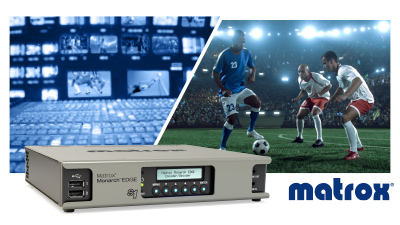Matrox Shipping New Bidirectional Encoder/Decoder For REMI Workflows
Monarch Edge S1 encodes studio program feeds for transport via private or public internet

MONTREAL—Matrox Video has begun shipping its new Monarch Edge S1 bidirectional encoder/decoder appliance for Remote Integrated Model (REMI) production workflows.
The Monarch Edge S1, which provides simultaneous encoding and decoding, offers broadcasters a way to deliver secure, high-quality, low-latency program feeds from the studio to multicamera production crews, talent and guests in a remote location. This capability overcomes the two-way communications challenges in REMI and multisite workflows by enabling natural interaction between remote and in-studio production personnel, Matrox said.
The appliance, which offers a 3G-SDI input and output, can encode a high-quality, studio-produced program feed for transport via private or public internet connections to sites equipped with a Monarch Edge S1, which decodes the return feed. The Monarch Edge S1 offers glass-to-glass latency as low as 100ms for constant, continuous communications between the studio and remote staff, it said.
With support for MPEG-2, TS, SRT and RTSP streaming protocols, the Monarch Edge S1 provides for tally and talkback channels, Matrox said.
Broadcasters using the Monarch Edge E4 quad-HD encoder and Monarch Edge D4 quad-HD decoder appliances in multi-camera REMI productions can use the Monarch Edge S1 return feeds to communicate with remote camera operators and in-studio personnel. The appliance is also well-suited for single- and multi-site remote contribution workflows, it said.
Remote contributors in different geographical regions can simultaneously send a high-quality camera feed while receiving a return feed, the company said.
More information is available on the company’s website.
Get the TV Tech Newsletter
The professional video industry's #1 source for news, trends and product and tech information. Sign up below.
Phil Kurz is a contributing editor to TV Tech. He has written about TV and video technology for more than 30 years and served as editor of three leading industry magazines. He earned a Bachelor of Journalism and a Master’s Degree in Journalism from the University of Missouri-Columbia School of Journalism.

